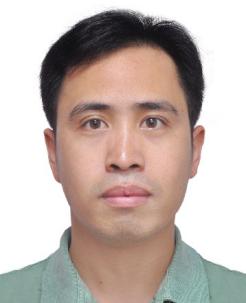姓名:王秋军
古生物学 副教授、硕导 | |
1、研究领域与方向
研究领域为古生物学,目前研究方向主要集中在寒武系杷榔组海绵动物的系统分类与演化,和二叠系植物系统分类和古气候重建。
2. 学习与工作经历
2006/09-2010/07,兰州大学,生命科学公司,学士
2010/09-2015/07,兰州大学,地质科学与矿产资源学院,博士
2015/7-2021/12,贵州大学,资源与环境工程学院,讲师
2021/12-至今,贵州大学,资源与环境工程学院,副教授
3. 科研教学及学术活动
(1)主持国家自然科学基金1项,省级科技项目2项。
(2)以第一作者和通讯作者发表论文10篇,其中SCI收录论文9篇。
4. 近年主持承担的主要科研项目
(1)国家自然科学基金(青年科学基金项目),42002012,贵州寒武系(第4阶)杷榔组海绵动物系统古生物学和群落营养结构研究,2021.01-2023.12,主持,在研。
(2)贵州省科技计划项目,黔科合基础-ZK[2021]一般201,贵州二叠系吴家坪阶龙潭组植物—昆虫的相互作用研究,2021/04-2024/04,10万元,主持,在研。
5. 学术成果:代表性学术论文
[1] Ma F.J., Sun B.N., Liu S., Zhou G.H., Ling C.C., Hu X.P., Han D., Wang Q.J.*, 2022. A new gigantopterid taxon Paragigantopteris qingloongensis gen. et sp. nov. from the Permian (Wuchiapingian) of southwestern China: Taxonomic and biogeographic implications. Review of Palaeobotany and Palynology, 300: 104625.
[2] Ling C.C., Ma F.J., Dong J.L., Zhou G.H., Wang Q.J.*, Sun B.N.*, 2021. A mid-altitude area in southwestern China experienced a humid subtropical climate with subtle monsoon signatures during the early Oligocene: Evidence from the Ningming flora of Guangxi. Palaeogeography, Palaeoclimatology, Palaeoecology, 579: 110601.
[3] Ling C.C., Peng J., Zhang H., Wang Y.F., Shao Y.B., Sun Q.Y., Wang Q.J.*, 2021. Saetaspongia sponges from the Cambrian (Stage 4) Balang Formation of Guizhou, China. Journal of Paleontology, 95(5): 944~956.
[4] Wang Q.J., Peng J.*, Wen R.Q., Du G.Y., Zhang H., Wang D.Z., Wang Y.F., 2020. Hamptonia jianhensis sp. nov. from the Cambrian (Stage 4) Balang Fauna of Guizhou, China. Historical Biology, 32(9): 1206~1214.
[5] Wang Q.J., Peng J.*, Wen R.Q., Du G.Y., Zhang H., Wang D.Z., Wang Y.F., 2019. Leptomitid sponges from the Cambrian (Stage 4) Balang Fauna of Guizhou, China. Geobios, 57: 127~139.
[6] 王秋军*, 毛铁, 孙柏年, 马福军, 吴步青, 夏燕梅, 刘松, 2017. 基于共存分析法和叶缘分析法重建中国渐新世年均温. 地质学报, 91(12): 2608~2622.
[7] Sun B.N.*, Wang Q.J.*, Konrad W., Ma F.J., Dong J.L., Wang Z.X., 2017. Reconstruction of atmospheric CO2 during the Oligocene based on leaf fossils from the Ningming Formation in Guangxi, China. Palaeogeography, Palaeoclimatology, Palaeoecology, 467: 5~15.
[8] Wang Q.J.*, Ma F.J., Dong J.L., Liu C.H., Liu S., Sun B.N.*, 2017. New costapalmate palm leaves from the Oligocene Ningming Formation of Guangxi, China, and their biogeographic and palaeoclimatic implications. Historical Biology, 29(5): 594~606.
[9] Wang Q.J., Ma F.J., Dong J.L., Yang Yi, Jin P.H., Sun B.N.*, 2015. Coryphoid palms from the Oligocene of China and their biogeographical implications. Comptes rendus Palevol, 14(4): 263~279.
[10] Wang Q.J., Ma F.J., Yang Y., Dong J.L., Wang H.F., Li R.Y., Xu X.H., Sun B.N.*, 2014. Bamboo leaf and pollen fossils from the late Miocene of eastern Zhejiang,China and their phytogeological significance. Acta Geological Sinica, 88(4): 1066~1083.



